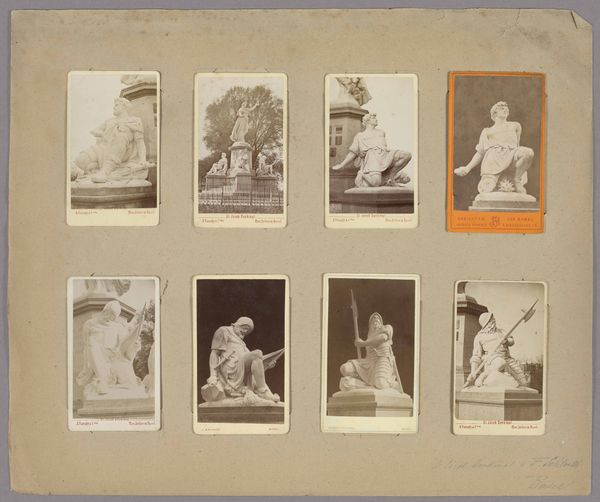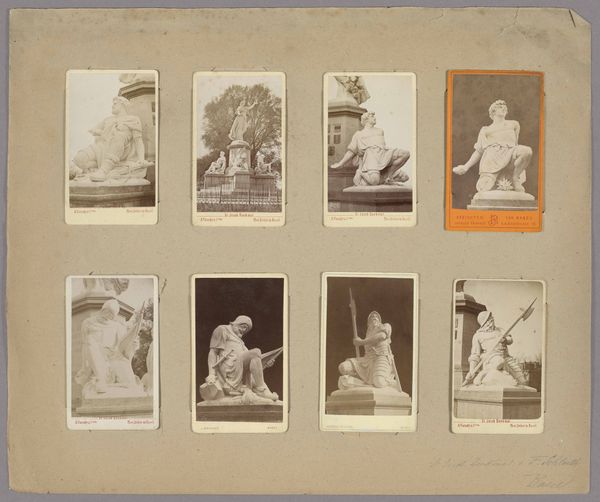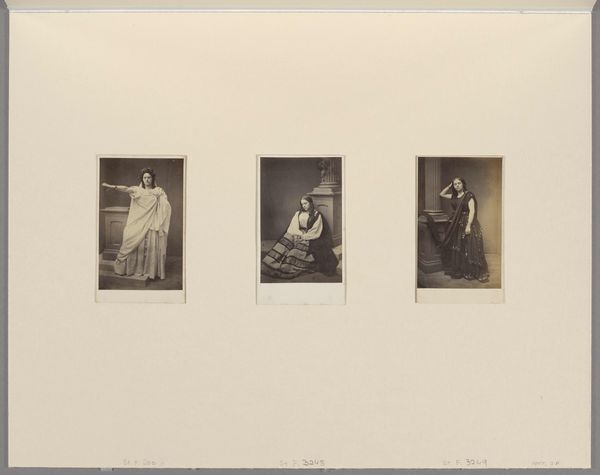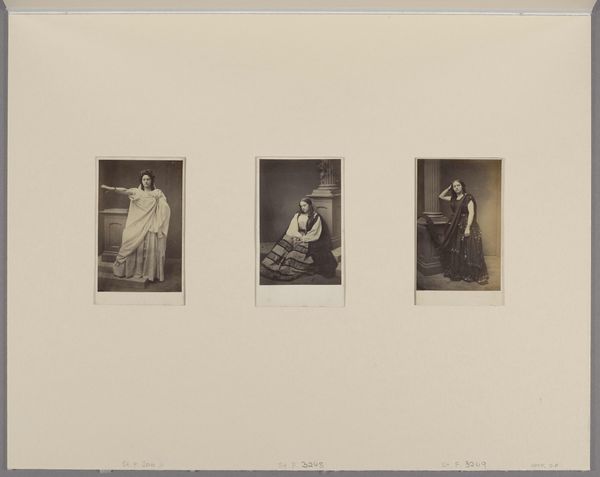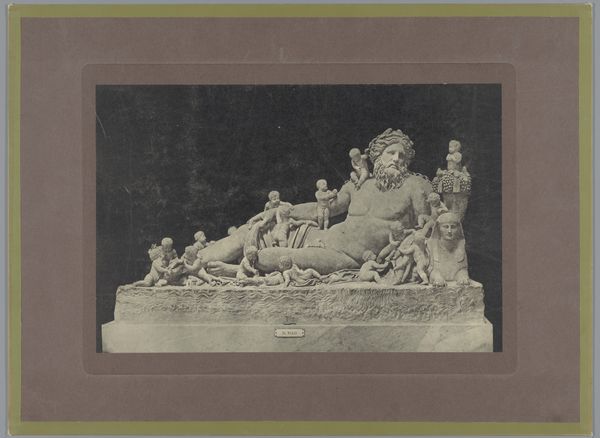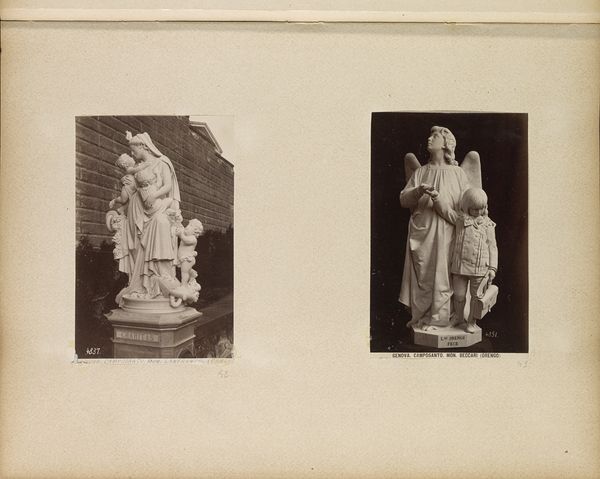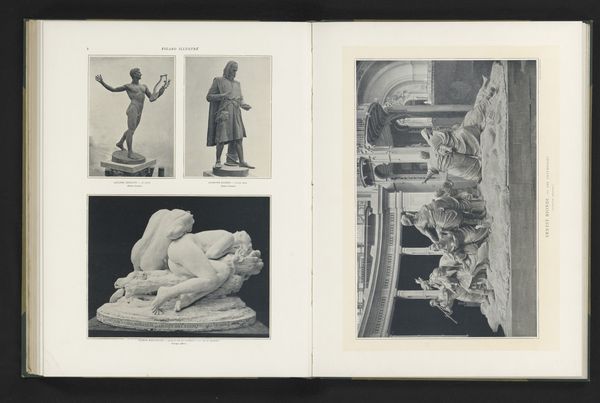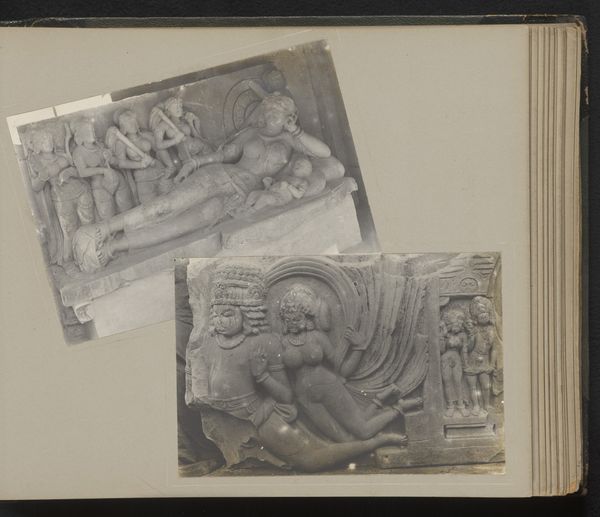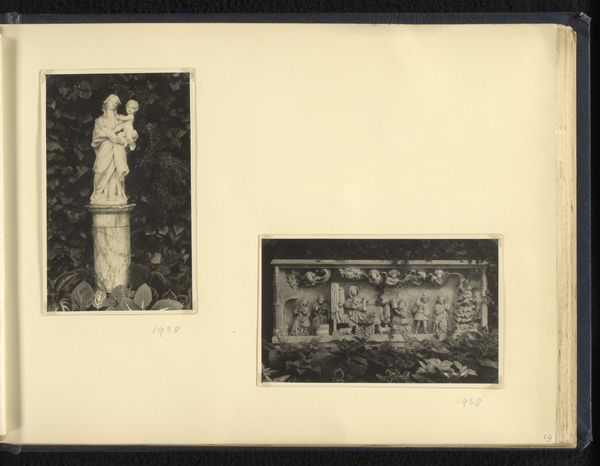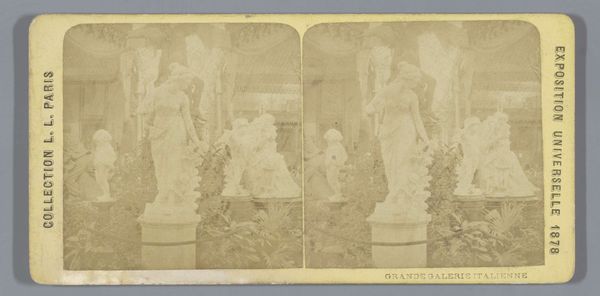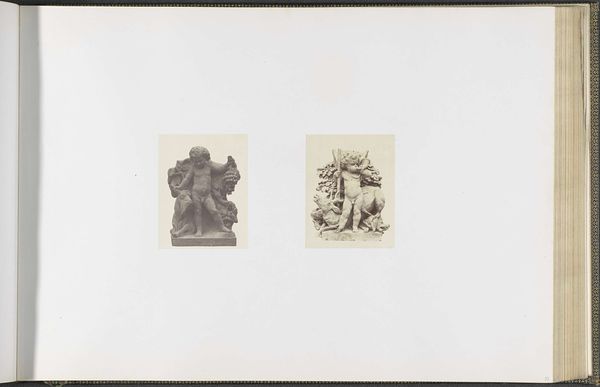
albumen-print, print, paper, photography, sculpture, albumen-print
#
albumen-print
#
portrait
#
16_19th-century
#
water colours
# print
#
landscape
#
paper
#
photography
#
sculpture
#
cityscape
#
watercolour illustration
#
albumen-print
Copyright: Public Domain
Curator: This is an albumen print created by A. Varady & Comp. around 1890, titled "Basel, St. Jacob Monument, stone thrower," currently held at the Städel Museum. Editor: My initial impression is one of almost mournful stillness, a captured silence. The composition within each frame seems incredibly rigid, further emphasized by that muted sepia tone. Curator: Precisely! Note the repetition of form – each photograph presents a sculpture, carefully framed and positioned within the overall tableau. The compositional elements, like the negative space surrounding each image, serve to isolate and highlight the form of each sculpture. Editor: Right, and those materials, the paper of the prints themselves… It seems so deliberate, the contrast between the heavy, static stone of the sculptures and the light, portable paper. Was this a common method of disseminating information about public works? Curator: Indeed. The albumen print allowed for detailed reproduction, becoming a popular means of distributing visual information. The play of light and shadow creates a textural complexity within each individual image, drawing the viewer's eye. Editor: Yes, but thinking materially, this also represents a type of consumption, doesn't it? Owning a miniature version of these civic monuments, detached from their public function. There’s a subtle commentary on class and access buried within. These albumen prints, seemingly benign, offered a way to acquire and possess cultural capital, transforming monumental public sculptures into private, consumable commodities. Curator: That’s an interesting lens. We also have to look at how the arrangement of images adds complexity – a dialogue of forms almost. See the recurring motif of the kneeling figure… how it subtly changes between the photos, the repetition creating an impactful visual rhythm across the entire work. Editor: This arrangement highlights the process of documentation itself, the hand of the photographer or curator who organized these images. It makes me question the labor and value attached not just to sculpture, but photography. Curator: Indeed, we could consider how it challenges conventional hierarchies, prompting viewers to consider value and presentation more deeply. Editor: For me, examining it reveals layers of hidden economic and social relations embedded in its production and reception.
Comments
No comments
Be the first to comment and join the conversation on the ultimate creative platform.

